Summary: It was a Euro move in FX with the focus on the ECB and its stimulus increase. Christine Lagarde and her colleagues did not disappoint. ECB policymakers increased the PEPP (Pandemic Emergency Purchase Program) by EUR 600 billion, more than expectations of EUR 500 billion, extending it until June 2021 at the earliest. The ECB left the Main Refinancing Rate unchanged. The larger than expected response highlighted the ECB’s commitment to strengthening the economy and sent the Euro soaring. The EUR/USD pair leaped beyond the 1.1300 barrier to 1.13625, March 12 highs, before easing to settle at 1.1335 (1.1235 yesterday) in late New York. It was a Euro move all round, the shared currency ending up 0.99% against the Yen (EUR/JPY 123.75 from 122.35), and 0.68% against Sterling (EUR/GBP 0.9000 from 0.8935). The US currency finished mixed against its other rivals. Against the Yen, the Dollar rose 0.15% to 109.18 (108.90). US Treasury yields rose. The benchmark 10-year bond yield climbed 7 basis points to 0.82%, the highest since March 26. The Australian Dollar dropped to an overnight low at 0.6882 following a 17.7% fall in May Retail Sales, climbing to 0.6950 (0.6925 yesterday) at the New York close. Sterling was modestly higher at 1.2590 (1.2575) despite a lack of progress on Brexit talks. The USD/CAD pair finished flat at 1.3492 following a Bloomberg report that new government modelling showed Canada could see coronavirus cases rise by as much as 15% by the middle of the month. Wall Street stocks closed mixed. The DOW gained 0.14% to 26,315 (26,278) while the S&P 500 was down 0.12% to 3,116 from 3,122 yesterday. Global bond yields were higher. Germany’s 10-year Bund yield rose 3 basis points to -0.33%. Japanese 10-year JGB rates rose to 0.02% from 0.00%.
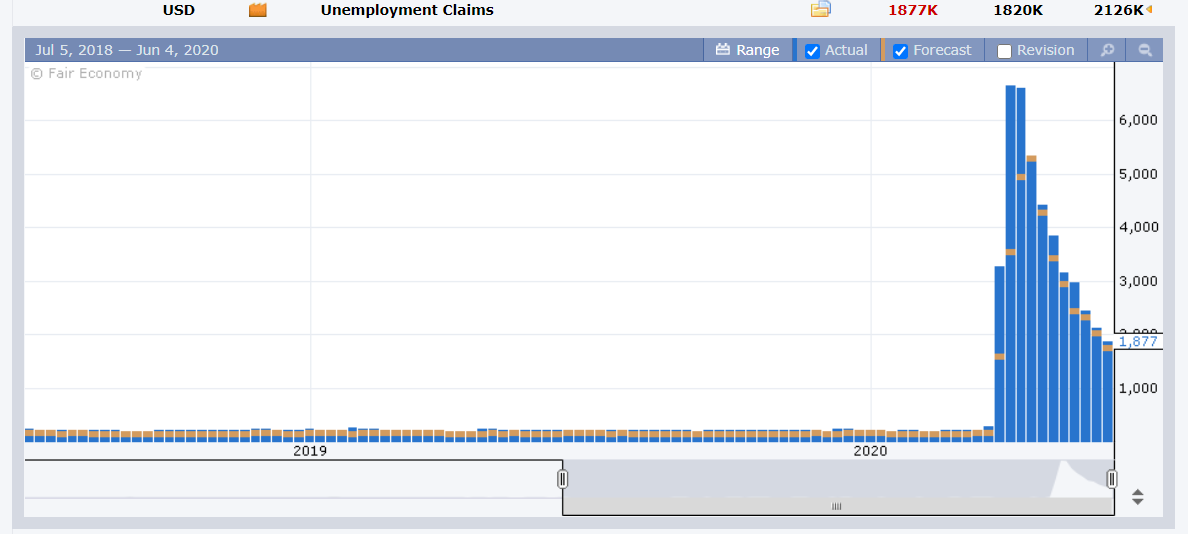
Australia’s May Retail Sales fell to -17.7% from -17.9%, and a forecast -17.9%. Canada’s Trade Deficit increased to -CAD 3.3 billion (May) from April’s -CAD 1.5 billion. US Weekly Unemployment Claims dipped to 1.877 million from the previous week’s 2.126 million and forecasts of 1.82 million. The US Trade Deficit increased to -USD 49.4 billion in May from an upwardly revised -USD 44.4 billion in April.
On the Lookout: The spotlight shifts to today’s US Non-Farms Payrolls report. Economists are looking for May Payrolls to drop to between -7.5 million to -8.0 million from April’s -20.5 million. Analysts forecast the Unemployment rate to rise to between 19.2% and 19.5% from 14.7%. Wages (Average Hourly Earnings) are expected to fall to 1.0% from 1.7%.
Other data released today kick off with Australia’s AIG Services Index. Japanese data follow with Household Spending and Leading Indicators. European reports start with the UK’s GFK Consumer Confidence and Halifax House Price Index. Germany follows with its Factory Orders. Italian Retail Sales follow. Canada’s Employment Change and Jobless rate and IVEY PMI follow. Finally, the US reports its NFP Payrolls numbers and Consumer Credit.
Trading Perspective: The Dollar Index (USD/DXY), a favourite gauge of the US currency’s value against a basket of 6 major currencies fell 0.53% to 96.769 (97.318 yesterday). The move was the result of the Euro’s 0.89% jump. The Euro takes almost 60% of the weight in the Index, and the fall in the US Dollar was not broad-based. The next move in the Greenback hinges on tonight’s US Payrolls numbers. If the Payrolls numbers are better all round, the US Dollar could surge, with the Euro dropping the most.
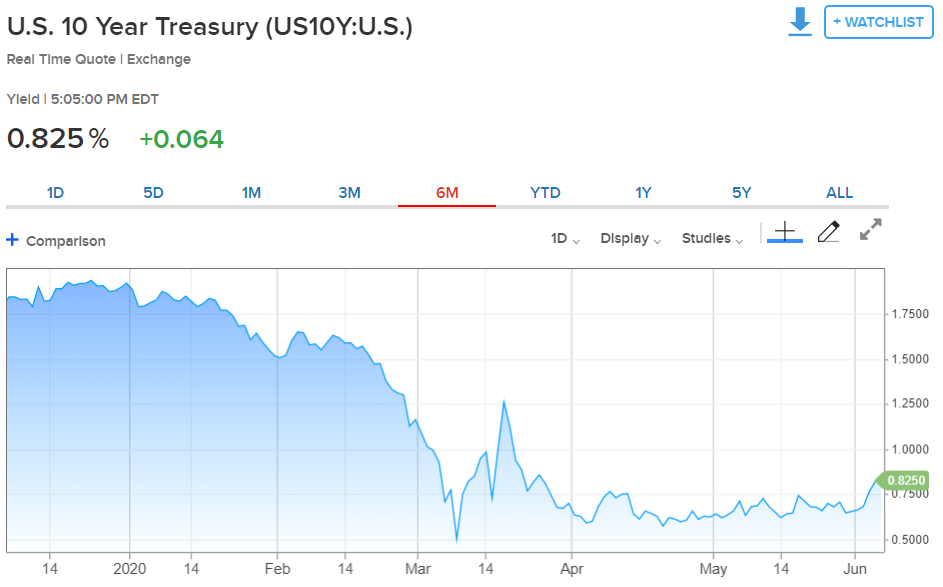
Meantime the benchmark US 10-year bond yield climbed 7 basis points to 0.82%, the highest its been since March 26. Other global 10-year bond rates were higher but not to the extent of the climb in that of the US. Which saw yield differentials widen in favour of the US. If these are sustained, the Dollar will see a needed correction with the bulk of it coming against the Euro.
EUR/USD – US Bond Yield Rise, Payrolls Risk to Euro’s 8-Day Rally
The Euro’s impressive 8-day rally against the Greenback risks a potential U-turn if tonight’s US Payrolls numbers are better all around. Another limiting factor to further Euro gains is the rise in US 10-year bond yields to March 26 highs at 0.82%. Germany’s 10-Year Bund yield, in contrast was only up 3 basis points to -0.33%, widening the yield differential in favour of the US Dollar. ECB president Christine Lagarde downgraded inflation and growth projections. Lagarde said that the Q2 contraction will be “unprecedented.” The ECB forecasts though were not as weak as the market feared.
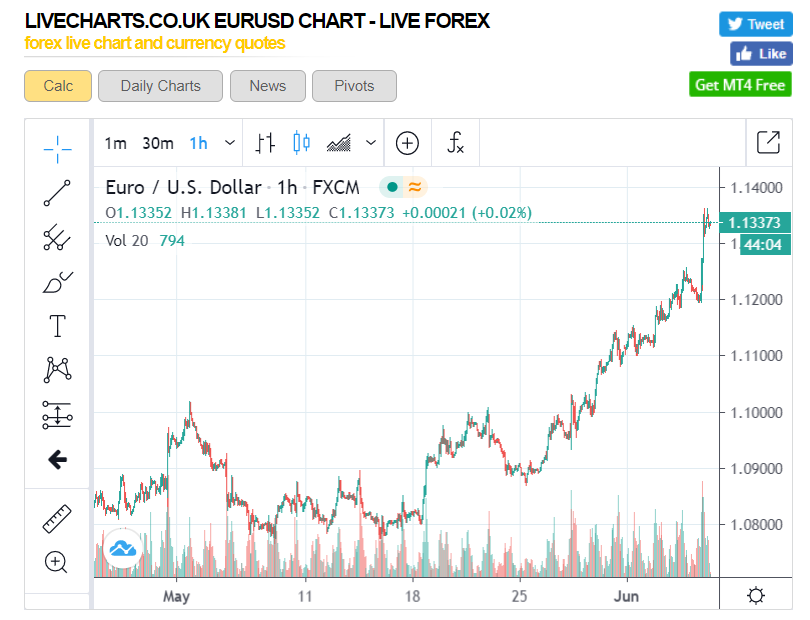
We reported earlier this week that speculative Euro long bets remained at elevated levels in the latest Commitment of Traders/CFTC report (week ended May 26). Most analysts are bullish on the Euro with good reason. But there are too many of them, which means a corrective move lower is entirely possible before higher.
EUR/USD has immediate resistance at 1.1370 followed by 1.1400. The next major resistance level for the shared currency against the Greenback is at 1.1500. Immediate support can be found at 1.1300 followed by 1.1260 and 1.1230. Look to sell rallies today with a likely pre-US Payrolls range of 1.1230-1.1350.
USD/CAD – Holds Lows, Wider Trade Deficit, Spotlight on US, CAD Payrolls
The US Dollar finished little changed against the Canadian Loonie in volatile trade yesterday. The USD/CAD pair slumped initially on broad-based US Dollar selling to 1.34677 before rallying to finish just under the 1.3500 level at 1.3495. USD/CAD reached a high at 1.3541 overnight following the release of Canada’s trade numbers. Canada’s May trade deficit widened to -CAD 3.3 billion from April’s deficit of -CAD 1.5 billion, underwhelming forecasts at -CAD 2.7 billion. Canada is a trade sensitive country, with much of its revenue coming from oil and other commodity exports.
A Bloomberg report that new government modelling could see Canada’s coronavirus cases rise by as much as 15% by the middle of the month. Which kept the USD/CAD resilient and the US Dollar is oversold.
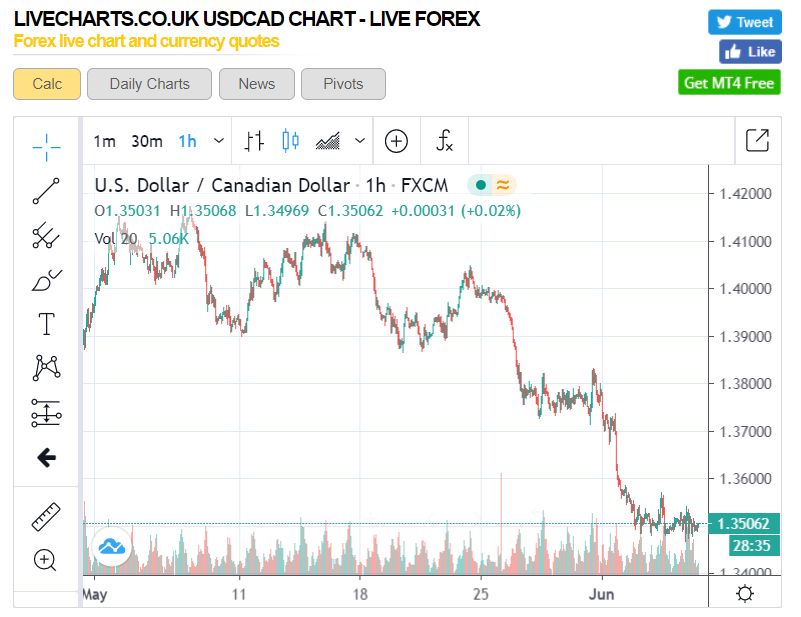
Canada’s Payrolls are forecast to fall to -500,000 in May from April’s -1.994 million. The Unemployment rate is forecast to climb to 15% from 13%. As markets are expecting slightly better numbers, the risk is for a disappointment.
USD/CAD has immediate support at 1.3460 followed by 1.3420. Immediate resistance lies at 1.3540 followed by 1.3590. Prior to the US and Canadian Payrolls, look to trade a likely range of 1.3470-1.3570. Prefer to buy USD dips.
AUD/USD – Range Intact; Optimism Fading Due to China, US Payrolls Disquiet
The Australian Dollar managed to recover following the corrective move lower to 0.68822 overnight after the failure to break above the recent high at 0.6988. The Battler’s 24-hour range of 0.6880-0.6990 is intact for now. Risks to a break in that range are the ongoing China-US tussle as well as tonight’s US Payrolls numbers. A turnaround in risk sentiment and a lift in the Greenback will see the Aussie, one of the best performing currencies, experience a sharp downward correction.
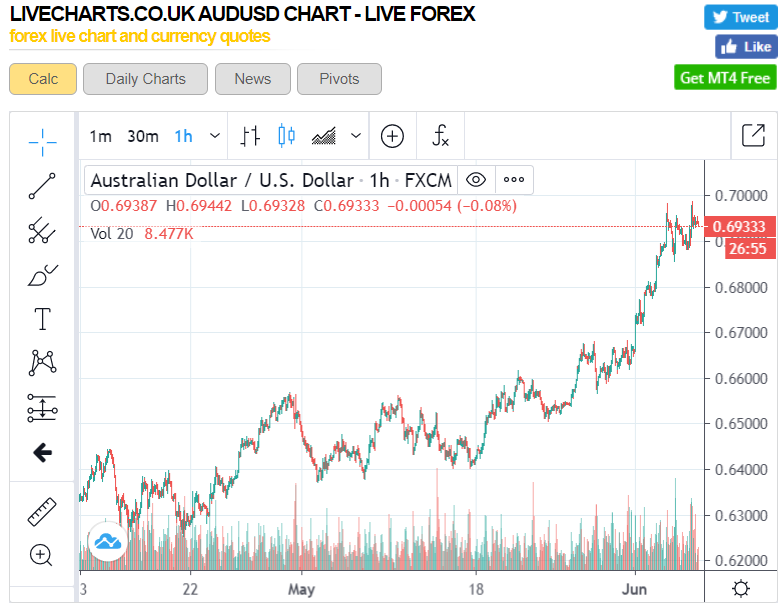
Overnight, the yield differential between Australian and US 10-year bond yields narrowed to 19 basis points from 25 basis points yesterday. The Aussie 10-year bond yield rose 1 basis point to 1.01%. US 10-year rates rose 7 basis points to 0.82%. In FX 101, we learned that yield differentials matter.
AUD/USD has immediate resistance at 0.6990-0.7000 followed by 0.7050. Immediate support can be found at 0.6910 followed by 0.6880. A break of 0.6880 could see a corrective move back to 0.6780/0.6800. Meantime expect a pre-US NFP range of 0.6880-0.6980. Prefer to sell rallies.












